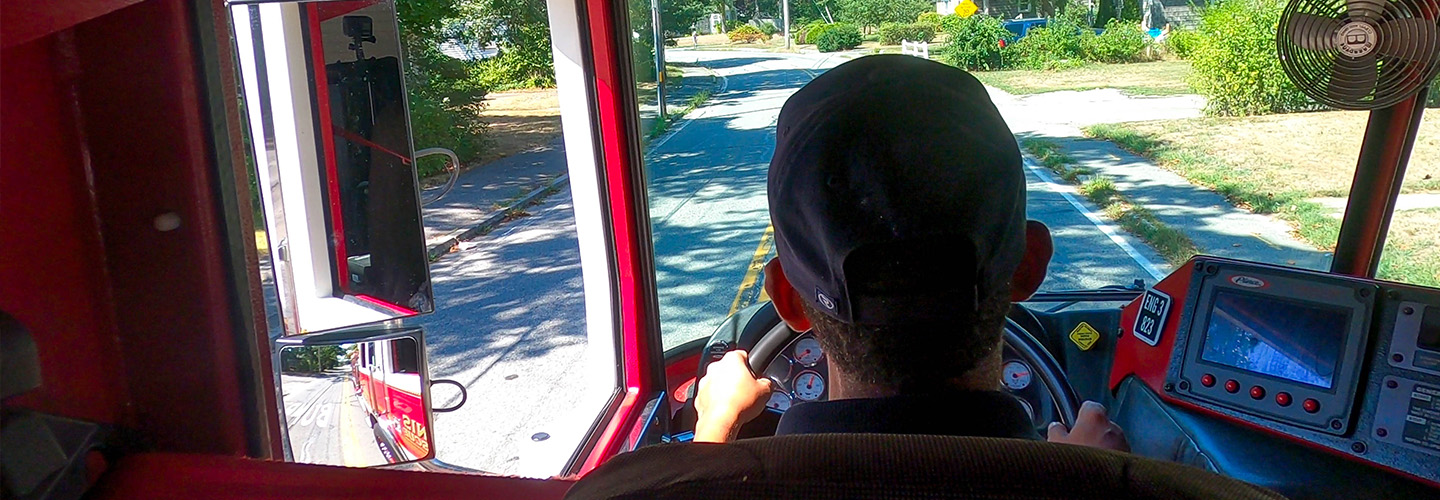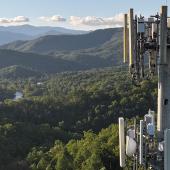The fire service faces many different challenges—from structure fires and HAZMAT incidents to wildfires and road accidents. Firefighters need the right tools for the job at hand. FirstNet, the nationwide public safety broadband network, is a key tool to help firefighters communicate in all incidents.
Here are five ways that FirstNet helps the fire service communicate.
1: Priority and preemption keeps firefighters connected with no throttling
Firefighters and other first responders have always-on priority and preemption on FirstNet with no throttling. That means public safety devices are always the first and most important on the network and network resources are never taken away.
This is especially important during special events or incidents when crowds can congest commercial networks.
Over 150,000 runners and supporters gather in Boulder, Colorado, every Memorial Day for one of the largest 10-kilometer road races in the world. Boulder Fire-Rescue Chief Michael Calderazzo said FirstNet was key to reliable public safety communications during the race.
“Every special event typically floods the airwaves,” he said. “Being able to rely on a cell phone system—regardless of what the general population is doing in a surge moment—is worth its weight in gold.”
2: Deployables bring coverage where and when it’s needed
The FirstNet fleet has over 150 deployables located at sites around the country that can be sent to emergencies in a matter of hours or scheduled in advance for planned events. These mobile cell sites link to FirstNet via satellite, do not rely on commercial power availability, and provide similar capabilities and connectivity as a cell tower. The deployable fleet is available to FirstNet subscribers 24/7 at no extra cost.
The newest assets in the fleet are compact rapid deployables, or CRDs. CRDs fit through a doorway, can be deployed by a single person in 15 minutes, and provide more than a one-mile radius of coverage. Agencies can transport a CRD via road, water, or air. CRDs can also be owned and operated by an agency, giving them flexibility to activate the unit on a moment’s notice.
The miniCRD™ is an even more transportable option. MiniCRDs, which are no bigger than your checked luggage, are highly portable and provide up to a half-mile of coverage.
3: FirstNet Central offers unprecedented insights and control
FirstNet Central is a single location to find and manage key features of FirstNet. With this one-stop shop, agencies can manage user accounts and devices, adjust priority levels, monitor the network status in near real time, request deployables, and manage push-to-talk users.
Two key features of FirstNet Central are FirstNet Uplift and the Advanced Network Status Tool.
- Uplift provides the ability to give devices identified by the agency an elevated level of access to the network for a temporary period. Uplift is particularly helpful for incorporating community partners into emergency response.
- Advanced Network Status Tool allows administrators to see information for individual cell towers, including outages. This unique feature allows public safety to monitor the status of the network in a specific area for better situational awareness.
4: Integration of LMR-LTE
For the fire service, FirstNet offers a way to expand your existing communication networks. FirstNet can integrate with land mobile radios, or LMR, to extend communication capabilities without additional expensive LMR devices.
The FirstNet Authority works to drive innovations for mission-critical communications, including the ability to interoperate with the thousands of LMR networks currently in use. First responders can leverage new broadband capabilities while integrating communications with their existing LMR systems.
Integrating LMR and FirstNet can alleviate the burden on LMR networks.
When a rare tornado hit Otsego County in northern Michigan, rescue calls started pouring in. Aid from the state and surrounding districts arrived on scene. And the governor and her team visited soon after the storm to survey the damage. This influx overwhelmed the county's radio networks.
The incident commander, Deputy Chief Gavin Babieracki of Otsego County EMS Rescue, requested a FirstNet deployable as a way to create interoperable communications among all the teams onsite. "Our deployable kit came with two hotspots. So, we got a network set up,” said Babieracki. “And within minutes we had everybody connected who wasn't already on FirstNet.”
5: Individual firefighters get the same FirstNet benefits as big agencies
Smaller, rural, or volunteer fire departments are often challenged with funding. These agencies sometimes don’t have the budget to issue cellphones or provide broadband service to their personnel. “Most volunteer fire and EMS workers provide their own cellular communications devices to assist in the completion of their duties,” said Chief Reid Vaughan of the Cuba Fire Department in Alabama.
Every firefighter must be able to communicate in an emergency. That’s why FirstNet has a subscriber-paid program for individual responders to sign up for FirstNet services. Individual firefighters can get verified as a first responder to subscribe to FirstNet for their personal devices. This gives individuals the same prioritized communications, increased capacity and coverage, and solutions designed for public safety operations that larger agencies get.
Chief Vaughan explained, “By allowing subscriber-paid service accounts, the same exact services are available to volunteer members on their personal devices at a lower cost.”
FirstNet is an important resource for all public safety agencies, but it is especially helpful for smaller, rural, or volunteer fire departments with limited budgets.
To learn more about how FirstNet is helping public safety and the Fire Services community to leverage innovative public safety communications, sign up for the Fire Services newsletter.




















